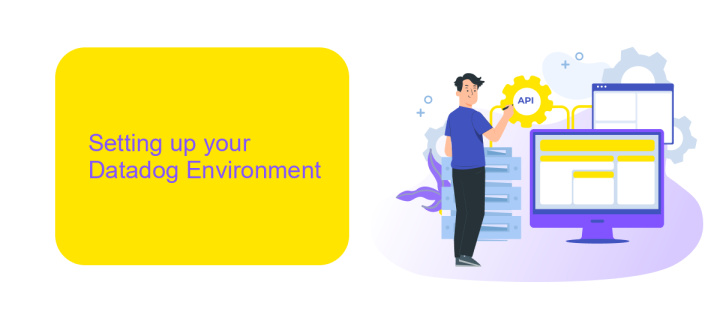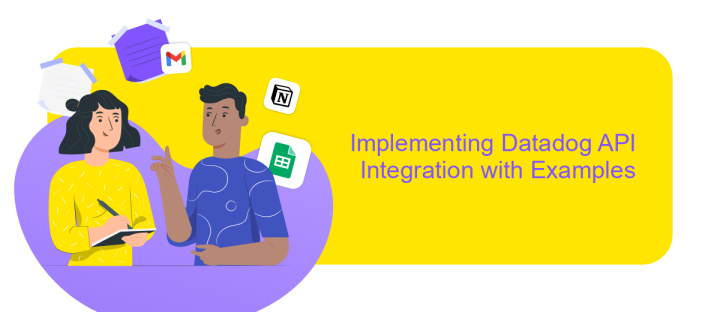Datadog API Integration
In today's data-driven world, seamless integration between monitoring tools and applications is crucial for maintaining optimal performance and reliability. The Datadog API offers a robust solution for developers and IT professionals looking to enhance their monitoring capabilities. By integrating Datadog's powerful features into your infrastructure, you can gain real-time insights, streamline operations, and proactively address potential issues, ensuring your systems are always running at their best.
Introduction to Datadog and its API
Datadog is a powerful monitoring and analytics platform designed to provide comprehensive visibility into your entire tech stack. It helps organizations track the performance of their applications, infrastructure, and services in real-time. By collecting and analyzing data from various sources, Datadog enables teams to identify issues, optimize performance, and ensure seamless operations across distributed systems.
- Real-time monitoring: Datadog offers real-time metrics, logs, and traces to help teams quickly detect and resolve issues.
- Comprehensive integrations: With over 400 integrations, Datadog seamlessly connects with popular tools, platforms, and services.
- Scalable infrastructure: Datadog can handle data from small startups to large enterprises, making it suitable for any organization size.
- Customizable dashboards: Users can create personalized dashboards to visualize key metrics and gain insights tailored to their needs.
The Datadog API is a robust interface that allows developers to programmatically interact with the platform. It provides a wide range of endpoints for managing data, configuring alerts, and automating workflows. By leveraging the API, teams can enhance their monitoring capabilities, integrate with other tools, and streamline their operations, ultimately driving efficiency and improving system reliability.
Setting up your Datadog Environment

To set up your Datadog environment, start by creating an account on the Datadog website. Once registered, you'll be guided through the initial setup process, which includes installing the Datadog Agent on your servers. This agent is crucial as it collects and sends metrics and events from your hosts to Datadog. Ensure you have the necessary permissions and access to your infrastructure for seamless integration. Follow the on-screen instructions to complete the installation and configuration of the agent.
After setting up the agent, explore the integration options available in Datadog. You can enhance your monitoring capabilities by integrating with various services and platforms. If you're looking for a streamlined way to connect Datadog with other applications, consider using ApiX-Drive. This service simplifies the integration process, allowing you to automate data transfers without writing code. By leveraging ApiX-Drive, you can efficiently manage your data flow between Datadog and other tools, ensuring a comprehensive monitoring environment. Customize your dashboard and alerts in Datadog to suit your operational needs, ensuring you're always informed about your system's performance.
Understanding Datadog API Key Management

Managing API keys in Datadog is crucial for ensuring secure and efficient access to its services. API keys allow applications and users to interact with Datadog’s API, enabling data collection, monitoring, and alerting. Proper management of these keys helps maintain system integrity and prevent unauthorized access.
- Generate API Keys: Navigate to the API section in Datadog settings to create new keys. Each key is unique and should be generated for specific use cases.
- Restrict Access: Assign API keys to specific teams or applications. Limit permissions to ensure keys are used only for their intended purpose.
- Monitor Usage: Regularly review API key usage to detect any unusual activity. Datadog provides tools to track and audit API calls.
- Rotate Keys: Periodically rotate API keys to enhance security. Update applications with new keys to ensure continuous functionality.
- Revoke Compromised Keys: Immediately revoke any keys suspected of being compromised to prevent unauthorized access.
Effective API key management in Datadog not only secures your infrastructure but also optimizes operational efficiency. By following best practices such as generating unique keys, restricting access, and regularly rotating keys, organizations can safeguard their data and maintain seamless integration with Datadog's powerful monitoring tools.
Implementing Datadog API Integration with Examples

Integrating Datadog API into your system can significantly enhance your ability to monitor and analyze application performance. This integration allows you to leverage Datadog's powerful features to track metrics, logs, and traces in real-time. To begin, ensure you have a Datadog account and an API key, which will be essential for authentication.
The first step in implementing the Datadog API is to set up your environment. You need to install necessary libraries, such as the Datadog API client for your preferred programming language. Once installed, configure your application to send data to Datadog by using the API key you obtained from your account settings.
- Install the Datadog API client library.
- Configure your application with the Datadog API key.
- Use API endpoints to send metrics and logs.
- Verify data flow by checking Datadog dashboards.
After completing these steps, you can start utilizing Datadog's dashboards to visualize and analyze the data sent from your application. This integration not only enhances monitoring capabilities but also helps in preemptively identifying and resolving potential issues.
- Automate the work of an online store or landing
- Empower through integration
- Don't spend money on programmers and integrators
- Save time by automating routine tasks
Best Practices and Troubleshooting
When integrating Datadog API, it's essential to follow best practices to ensure seamless performance and reliability. Begin by thoroughly reviewing the Datadog API documentation to understand its capabilities and limitations. Ensure that your API keys are securely stored and managed, using environment variables or a secrets manager to prevent unauthorized access. Regularly monitor your API usage to avoid exceeding rate limits, which can disrupt data collection. Implement error handling in your integration scripts to manage unexpected responses gracefully, ensuring that your system remains robust against potential API changes or downtime.
For troubleshooting, start by checking network connectivity and verifying that your API keys are correct and active. Utilize logging to capture API requests and responses, which can be invaluable for diagnosing issues. If you encounter persistent problems, consider using integration platforms like ApiX-Drive to simplify the connection process. ApiX-Drive can help automate data flows and provide a user-friendly interface to manage integrations, reducing the complexity of manual coding. By leveraging these tools and strategies, you can maintain a reliable and efficient Datadog API integration.
FAQ
How can I authenticate with the Datadog API?
What permissions are required to use the Datadog API?
How can I automate data integration with Datadog?
What are the rate limits for the Datadog API?
How do I troubleshoot API errors with Datadog?
Routine tasks take a lot of time from employees? Do they burn out, do not have enough working day for the main duties and important things? Do you understand that the only way out of this situation in modern realities is automation? Try Apix-Drive for free and make sure that the online connector in 5 minutes of setting up integration will remove a significant part of the routine from your life and free up time for you and your employees.


